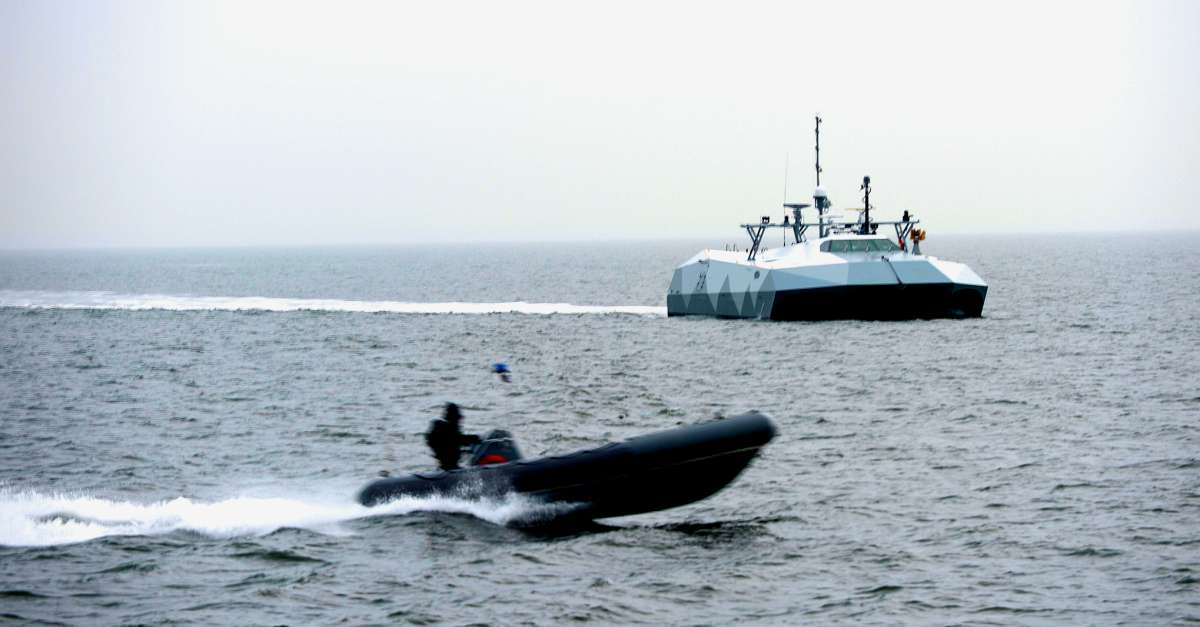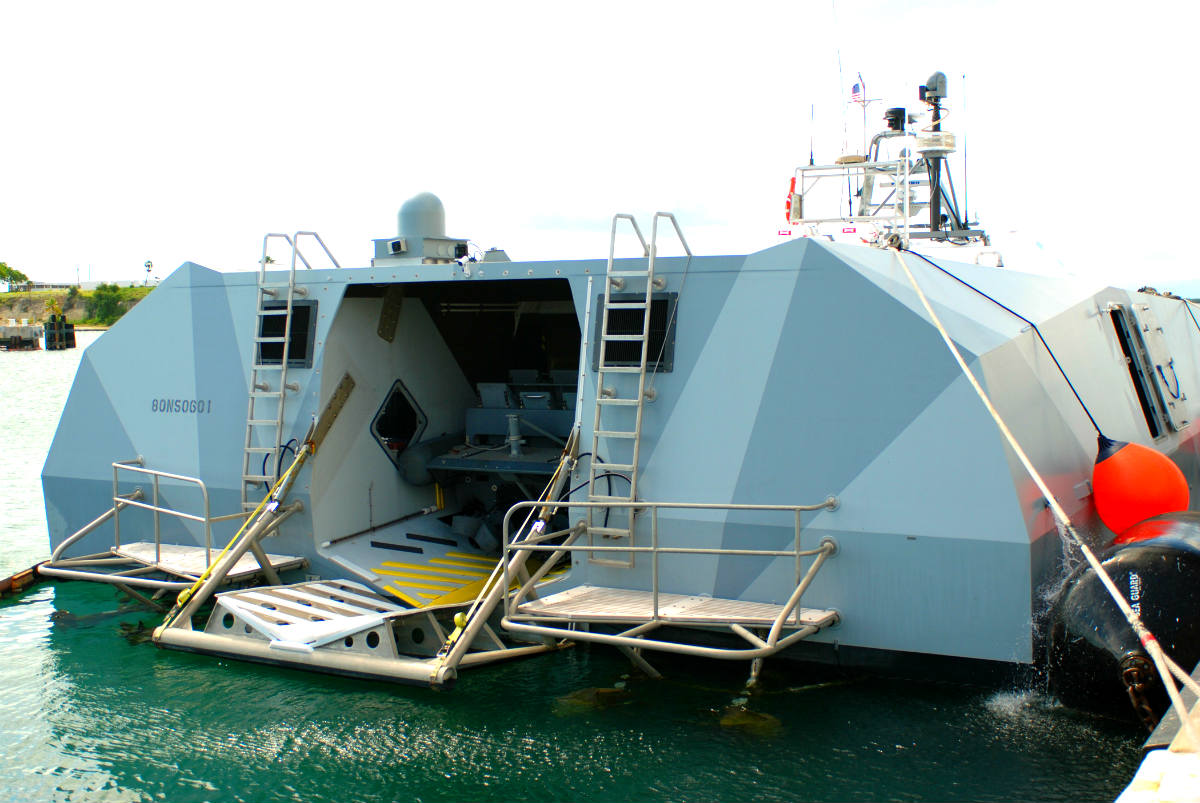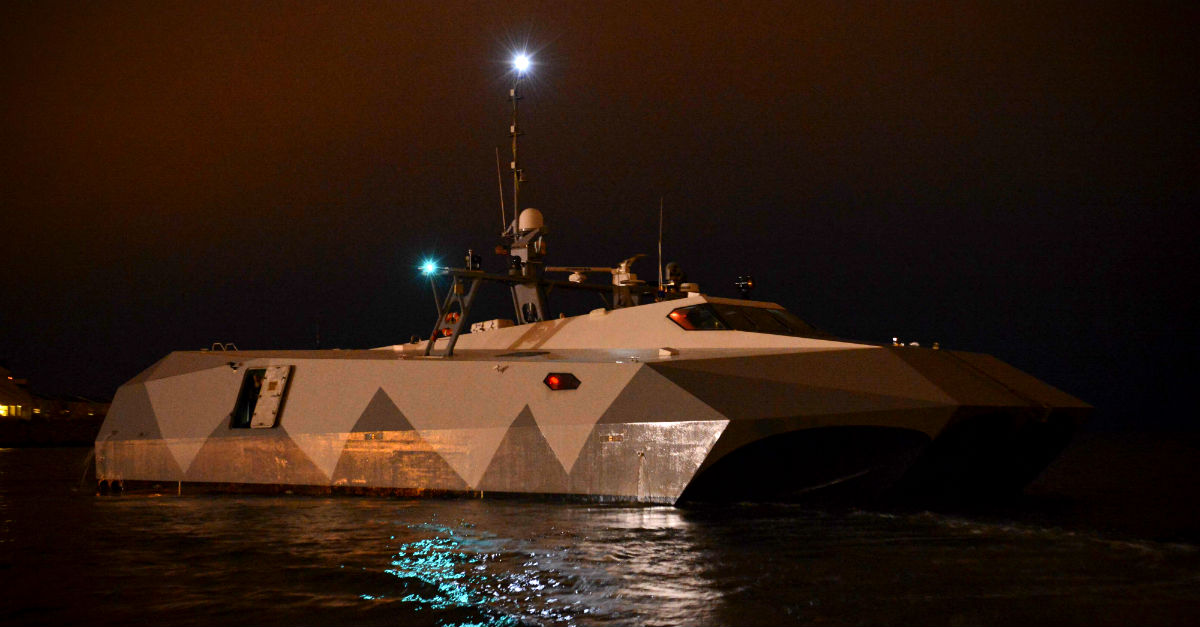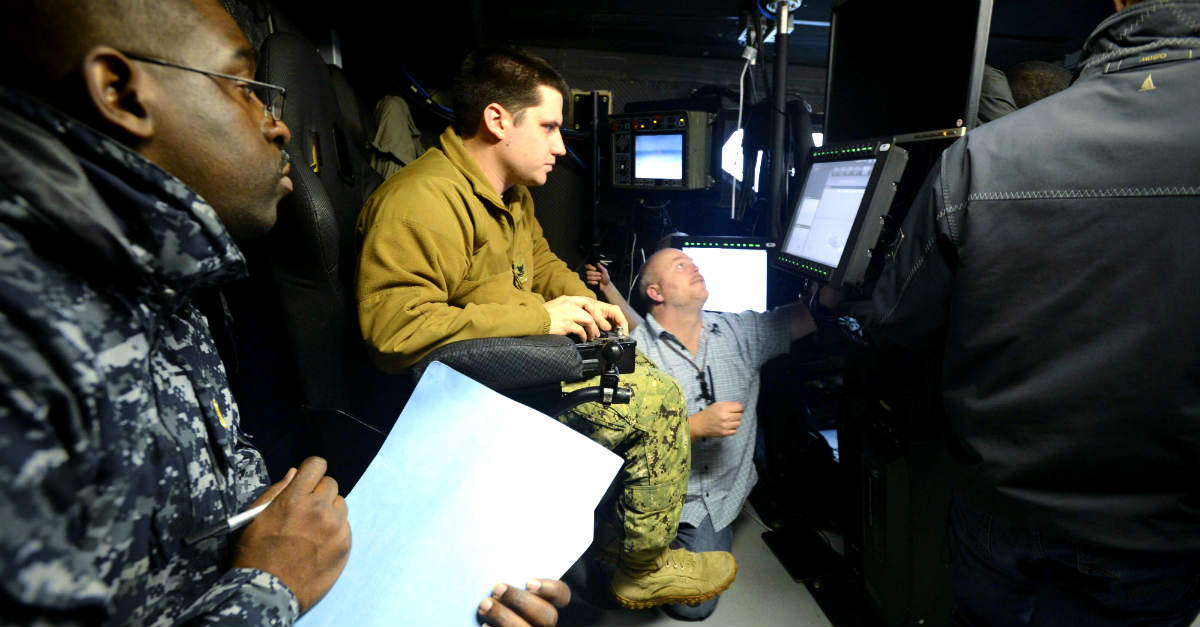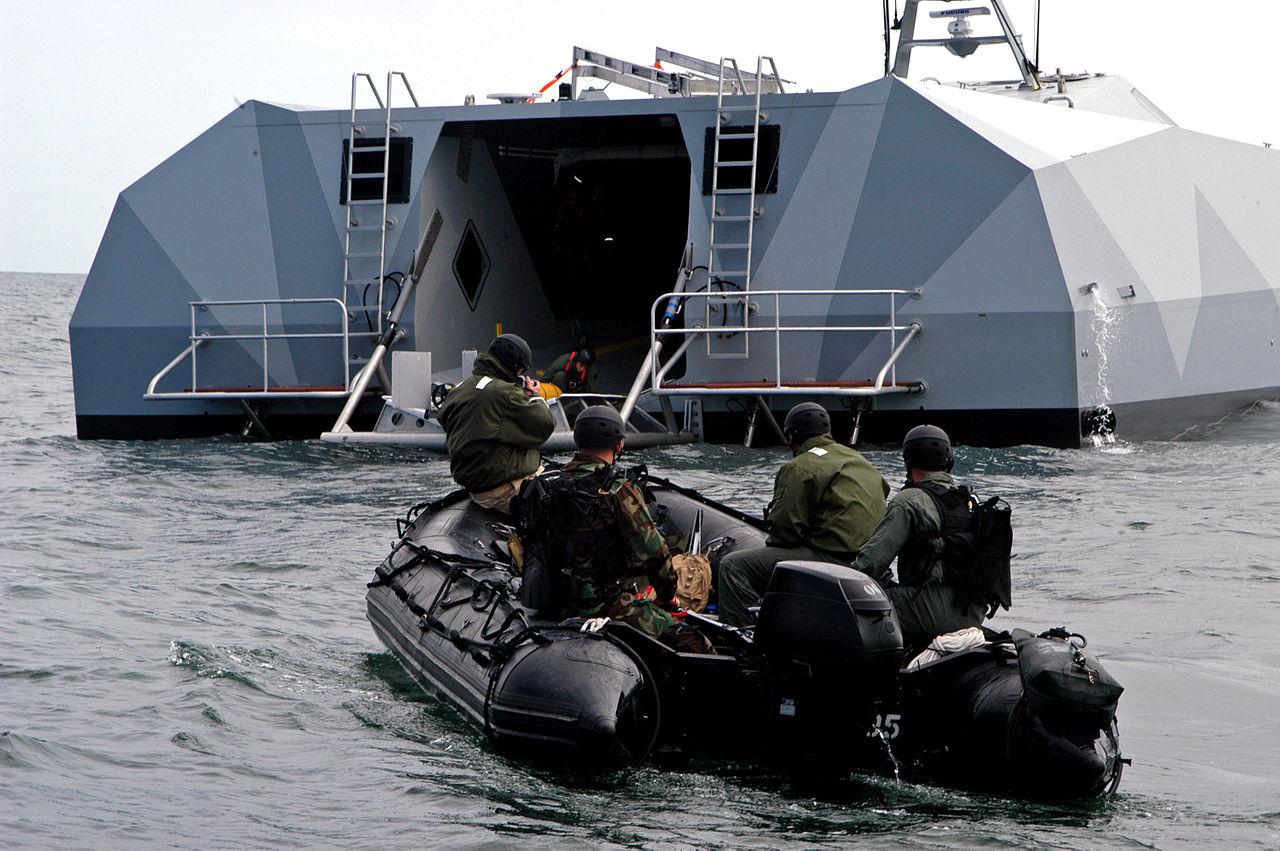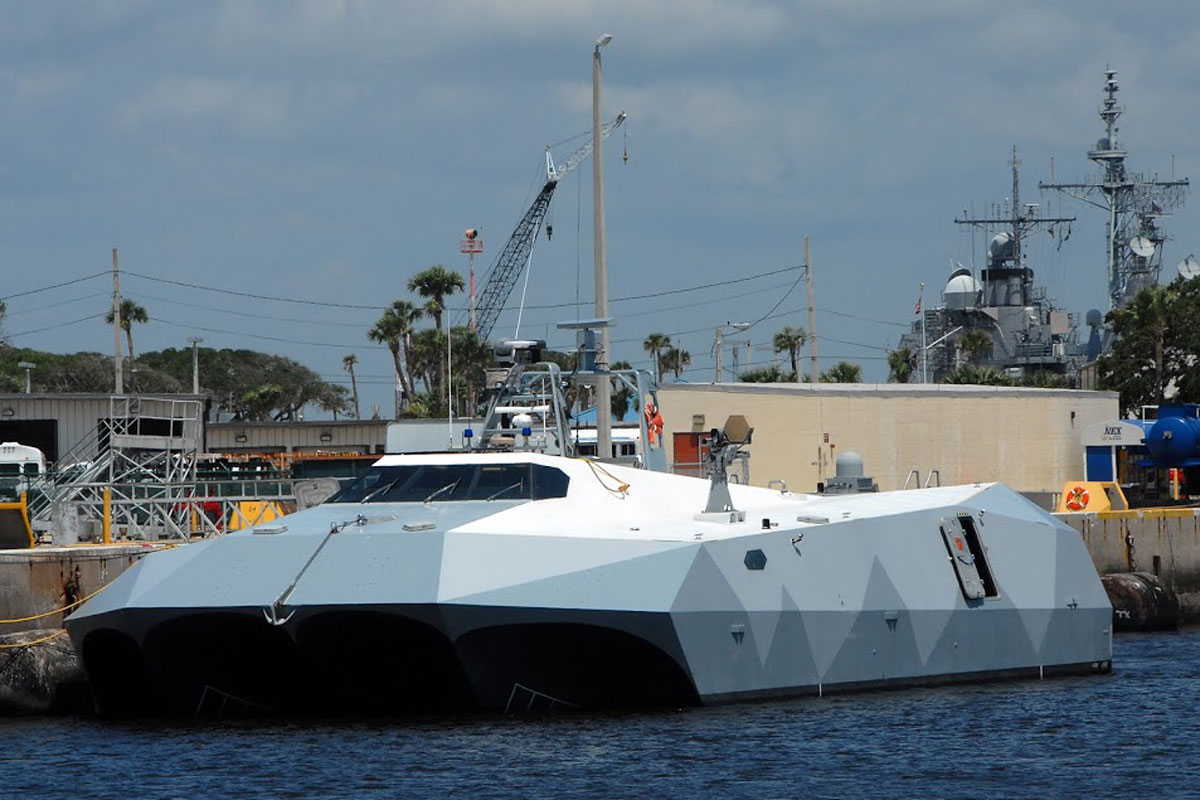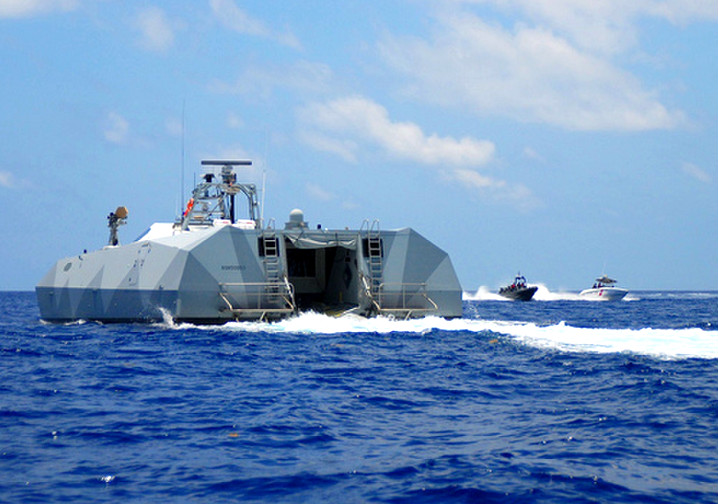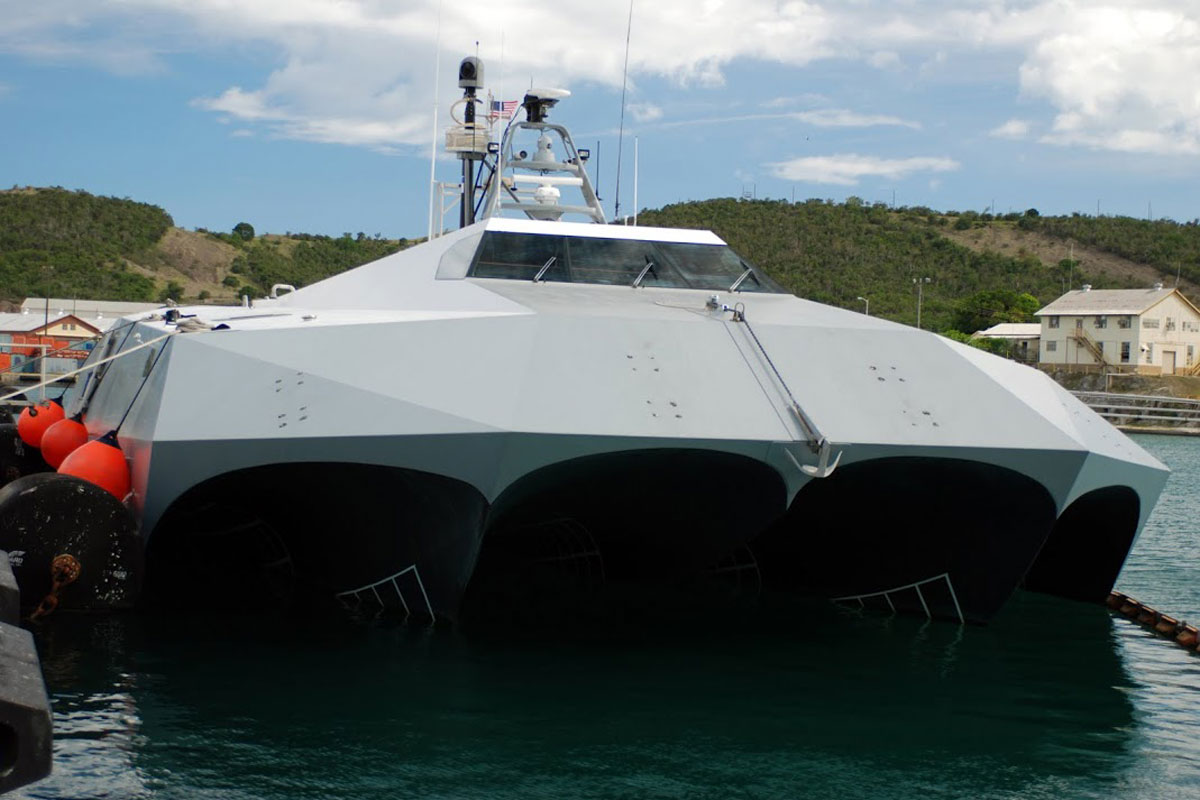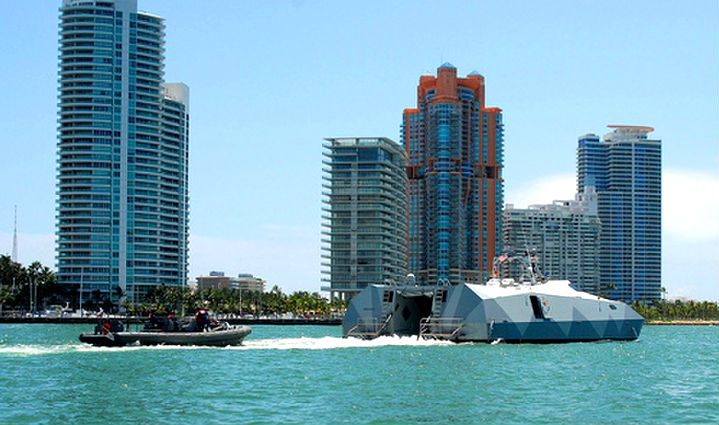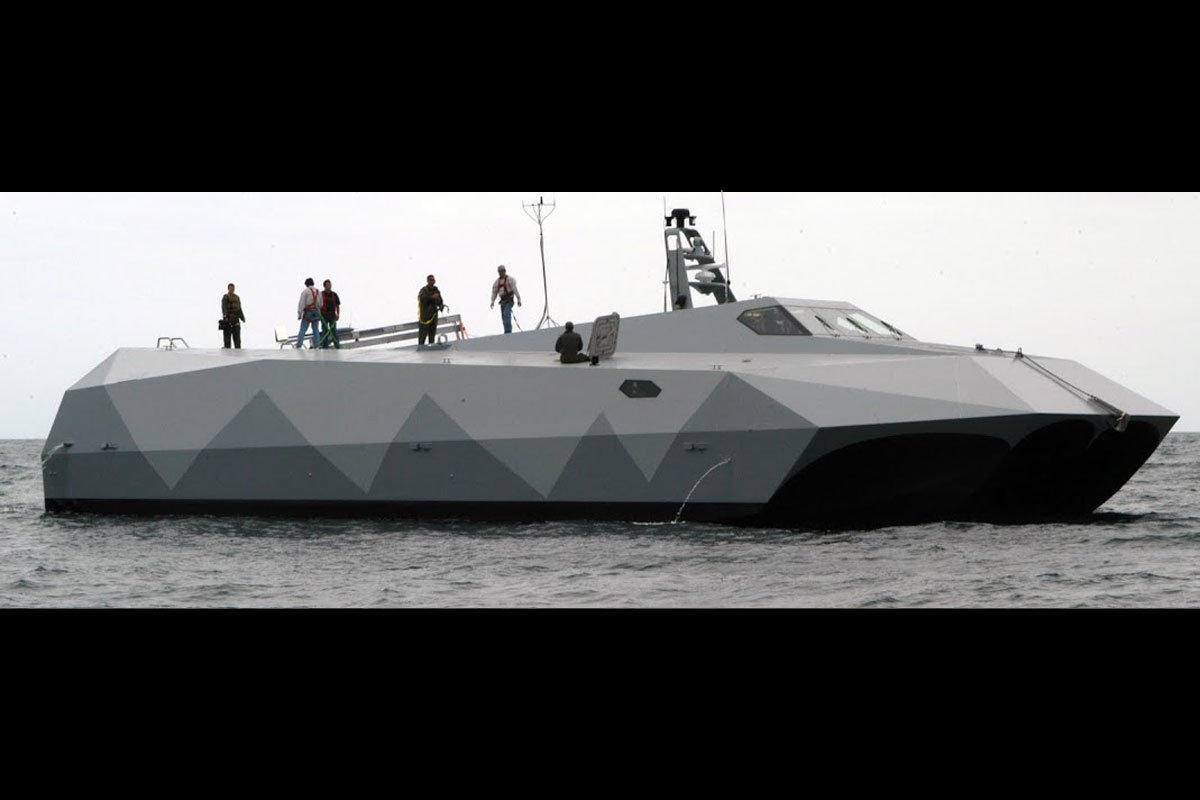In the autumn of 2008, three men and a speedboat loaded down with narcotics sped through the straits near the Florida coast. They were drug smugglers from South America and they raced to evade the authorities that were hot on their tail. Traveling upwards of 40 knots, they decided to move to shallow waters to escape. No Navy or Coast Guard ship could follow them there, they thought. These men clearly didn’t know about the M80 Stiletto. Even in the shallow, 5-foot, water, the authorities are still in pursuit and after two hours, the smugglers run out of fuel.
The M80 Stiletto is an experimental military ship developed for high speed military operations in shallow and littoral waters. Designed by M Ship Company LLC, the M80 utilizes a unique double M-Shape hull to reduce draft to a mere 3 feet while maintaining the ability to maneuver through rough seas.
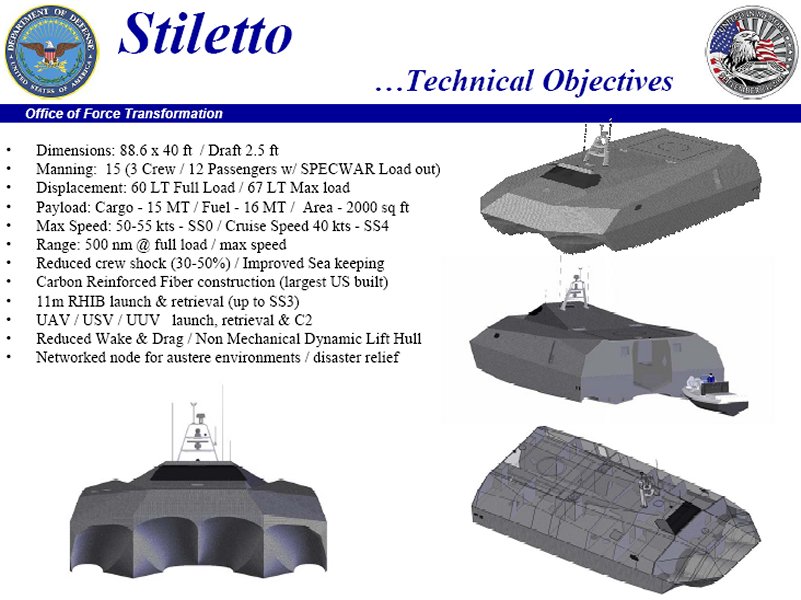
Capabilities
Built with a carbon fiber composite, the ship is light and fast: able to travel at speeds of 50-60 knots. With a 40’ 5” beam and a length of 88’ 6”, it’s low, wide profile makes it stealthy and capable of avoiding most radar detection methods. The Stiletto is also multi-functional. It can deploy both sea and airborne surveillance equipment and be outfitted with mine clearing devices and a variety of ISR (Intelligence Surveillance and Reconnaissance) assets. M80 is unique in its design and capabilities and currently operates as a test vessel for the US Navy.

M80 Stiletto Speed
The M80 stealth ship has four Caterpillar C32 diesel engines with Arneson ASD-14 drives. Combined with its lightweight carbon fiber hull, these 6,600 horsepower engines propel the Stiletto to 50+ knots in 8 foot seas (according to 2006 tests). What’s more, the double M-shape hull recaptures the bow wave and creates an air cushion. This reduces drag, wake, noise, and helps keep the M80 further out of the water, resulting in its super-shallow 3 foot draft, while maintaining a smoother ride in rough waters. Highly maneuverable, it was able to complete a 360° flat turn with only a 10% reduction in speed during testing.

Payload
The M80 has an internal payload of 1,996 square feet and can carry up to 20 tons of crew and equipment. It can transport 13 personnel (to include a crew of 3) and launch small inflatable boats up to 11m long. Coupled with the ability to deploy ISR and surveillance assets, as well as operate as a communications hub with its “electronic keel”, the Stiletto is perfect for special operations.
M80 Stiletto Stealth
Its stealthy size and shape reduce its radar signature and help to prevent detection. Coupled with its shallow water prowess and payload capabilities, the M80 can sneak into shallow water, deploy a SEAL team, and provide both ISR and communications support while the team conducts actions on the objective.
History And Current Use
Launched in 2006, the M80 Stiletto was originally designed and created to serve as an experiment and proof of concept for advanced shallow-water and riverine craft under the Department of Defense’s now closed Office of Force Transformation. Developed in a little over a year, the overall cost of the experiment was $12 million, with the ship itself costing $6 million.
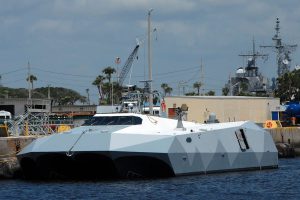
While it performed well in tests, the Navy did express some concerns with its ability to withstand even rougher seas. With the Office of Force Transformation closed, the Stiletto Program is now run by the Naval Surface Warfare Center Carderock Combatant Craft Division. It is currently used as a test ship to showcase and demonstrate new electronics and naval technology. However, the Stiletto has seen action in the Caribbean.
Testbed
In 2008, during a 6,000 nautical mile deployment in the Caribbean, the Stiletto stealth ship was involved in a high speed drug bust off the Florida Straits. It continued to conduct counter-drug operations in the Caribbean area through the late 2000’s. In 2012, it was used to assist NASA in the recovery of an experimental space capsule heat-shield off the coast of North Carolina.
While the M80 Stiletto stealth ship has not seen widespread use and deployment, it continues to operate as a test vessel for the Navy and is used in a special operations capacity for select missions.
